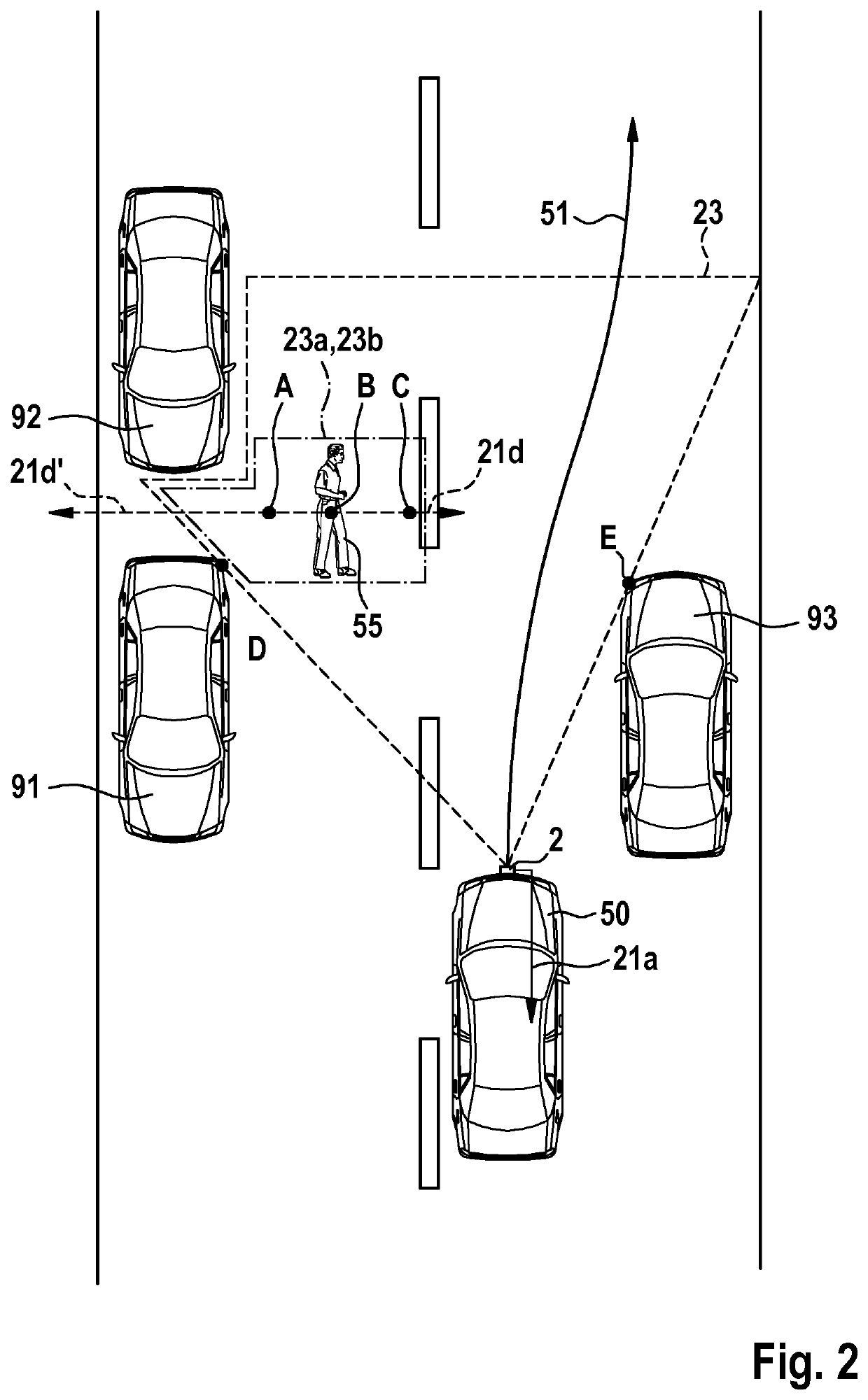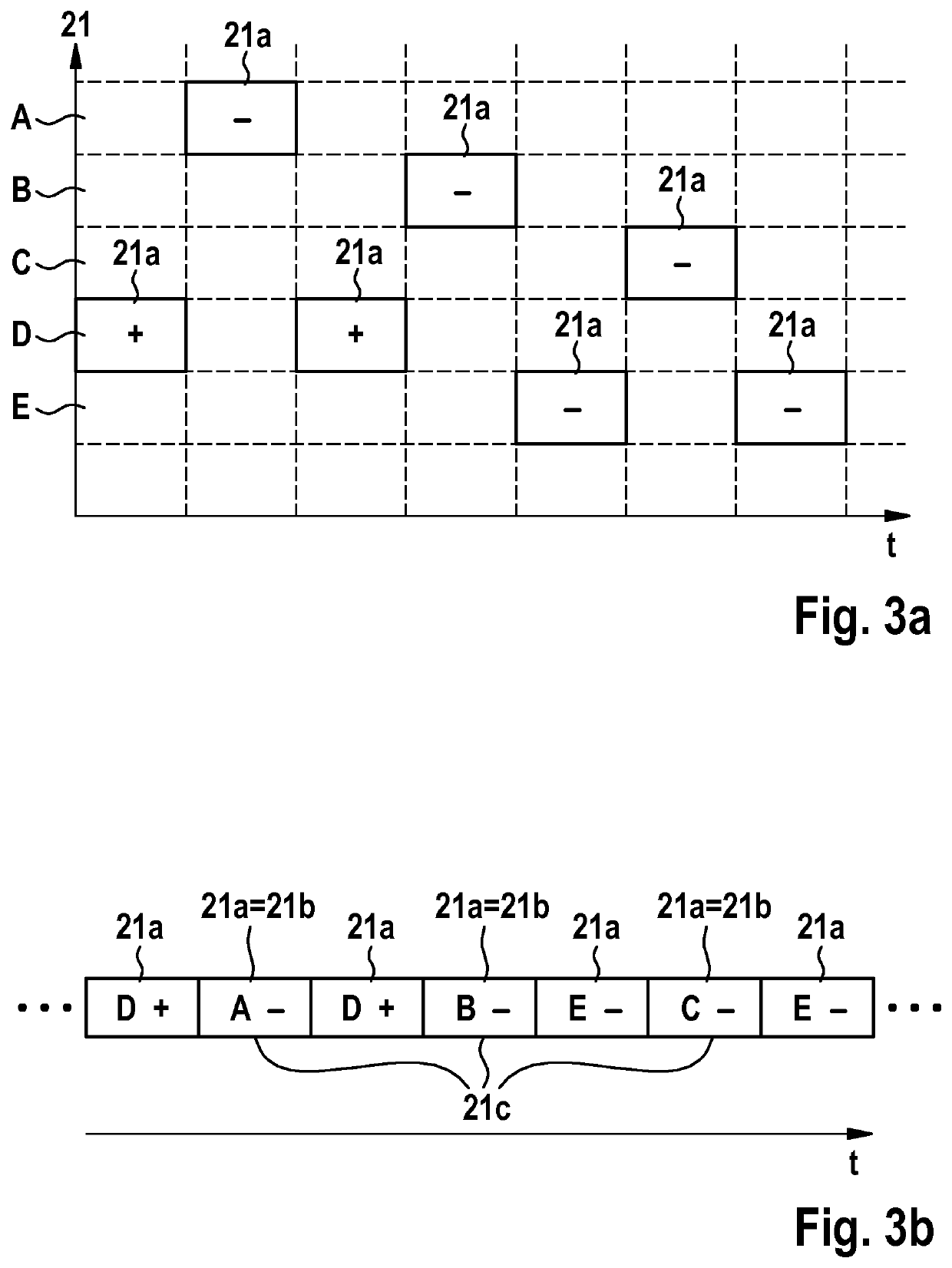Fast detection of secondary objects that may intersect the trajectory of a moving primary object
a secondary object and detection technology, applied in the field of fast detection of secondary objects, can solve the problems of large percentage of accidents occurring and taking too long
- Summary
- Abstract
- Description
- Claims
- Application Information
AI Technical Summary
Benefits of technology
Problems solved by technology
Method used
Image
Examples
first embodiment
[0038]FIG. 4 First embodiment of vision sensor 2 with sharp transition between central portion 20a and boundary portions 20c, 20e of light-sensitive area 20;
[0039]FIG. 5 Variant of first embodiment shown in FIG. 4, with gradual transition between central portion 20a and boundary portions 20c, 20e;
second embodiment
[0040]FIG. 6 Second embodiment of vision sensor 2 with event-based pixels 21 and image pixels 22 interleaved in a constant ratio.
[0041]FIG. 1 shows an exemplary embodiment of the system 1. Physical collection of measurement data is performed by vision sensor 2 that has a light-sensitive area 20, which in turn is divided into individual pixels 21. Whenever the light intensity impinging onto an event-based pixel changes at least by a certain percentage, the vision sensor 2 emits a corresponding event 21a.
[0042]The discriminator module 3 collects the events 21a from the vision sensor 2, as well as the information 52 about the heading and / or speed of the motion of the primary object 50. This information 52 may be acquired by any appropriate means, e.g., by means of dedicated sensors, or by accessing sensors that are already present somewhere in a vehicle via a bus system to which the sensors are connected (e.g., CAN bus).
[0043]The discriminator module 3 identifies those events 21b that...
PUM
 Login to View More
Login to View More Abstract
Description
Claims
Application Information
 Login to View More
Login to View More - R&D
- Intellectual Property
- Life Sciences
- Materials
- Tech Scout
- Unparalleled Data Quality
- Higher Quality Content
- 60% Fewer Hallucinations
Browse by: Latest US Patents, China's latest patents, Technical Efficacy Thesaurus, Application Domain, Technology Topic, Popular Technical Reports.
© 2025 PatSnap. All rights reserved.Legal|Privacy policy|Modern Slavery Act Transparency Statement|Sitemap|About US| Contact US: help@patsnap.com



